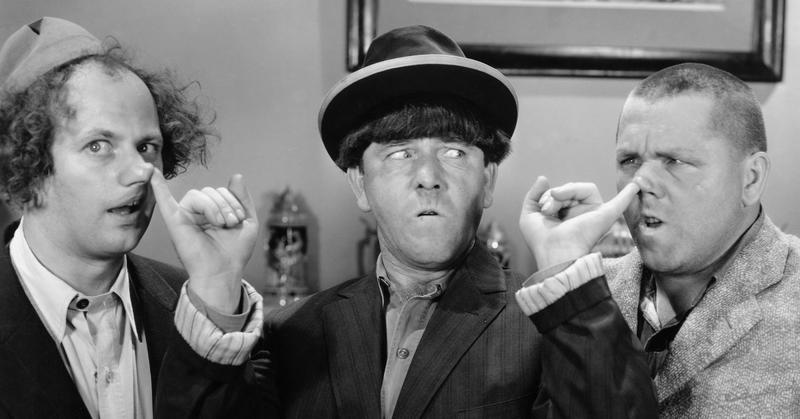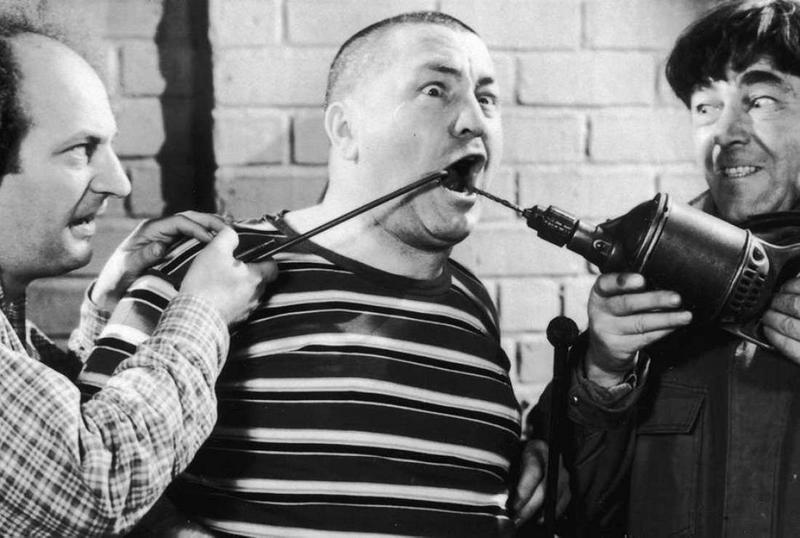The Three Stooges: Pain, Anger And Insults Were Never So Funny
By | January 7, 2018

Slapstick comedy trio The Three Stooges were definitely not a new act in the 1960s but they had their place there all the same. The wacky trio was a spinoff of a vaudeville comedy act that began back in the 1920s, billed as "Ted Healy and His Stooges." The act ran from 1922 to 1934 and was so well received that it soon took on a life of its own.
In 1934, The Stooges regrouped to set out on their own, and that is when they first became known as The Three Stooges. The group was an instant success. The Stooges soon became so well known that they began being regularly seen on television as well as the big screen.
The Original Three: Larry, Moe And Shemp

Over the years, the Stooges had their ups and downs, mainly with keeping character members. There were actually 6 Stooges in all (7 if you count “fake Shemp”); of course, only three at any given time. Health concerns and family issues were the major cause of the Stooges filtering in and out of the act. The original three who performed with Healy were Moe, Shemp and Larry. At one point, Shemp left the group to pursue his own solo comedy gig. The lineup fluctuated thereafter.
Exit Shemp; Enter Curly

• 1934 – 1946: Moe Howard, Larry Fine and Curly Howard.
• 1946 – 1955: Moe Howard, Larry Fine and Shemp Howard. Shemp returned when Curly suffered a debilitating stroke. He agreed to step in to keep the act going but only wanted to commit temporary. Curly was never able to return and Shemp remained a Stooge until his unexpected death in 1955.
The Fake Shemp And Joe

• 1955 – 1956: Moe Howard, Larry Fine, and the fake Shemp Howard. Although Shemp died in 1955 of a heart attack, the Stooges still owed Columbia four films, so Joe Palma was hired to replace Shemp -- sort of. Using existing footage and new scenes filmed that showed Palma from the back, the 3 Stooges were able to satisfy their Columbia contract; Palma's stand-in performances earned him the distinction of being the "fake Shemp." (The term "fake Shemp" now refers to the tactic of trying to pass a replacement actor off as the real thing by using camera angles, costuming or other tricks.)
• 1956 – 1958: Moe Howard, Larry Fine and Joe Besser.
Onto The Small Screen With Curly Joe

• 1958 – 1970: Moe Howard, Larry Fine and Curly Joe (DeRita).
The Joe DeRita era was a rebirth for the Stooges, who'd found a new audience thanks to television. The old shorts, originally shown in movie theaters, turned out to be very popular TV programming, and all 190 were aired frequently. Their new popularity allowed the Three Stooges to make six feature films in the '60s, and in 1965-66 they had their own show, The New Three Stooges, which was a mix of sketches and cartoons. They were also in demand as guests on TV talk and variety shows during the '60s. By 1970, the Stooges were slowing down and were more loosely gathered. They began working on some smaller projects and touring. In the process, Larry suffered a stroke, which ended his career. There was talk about replacing him for a movie project they had been working on but instead, the footage they already had was edited and released as a last hurrah in 1973.
Ganging Up On Curly

The Stooges specialized in zany short films with a focus on their own unique brand of slapstick comedy. They were well known for their over exaggerated and punishing physical antics. It was funny to watch them play off each other for the big laughs. Unfortunately for him, Curly usually got the worst of it!
Social Commentary

At the height of their success, The Three Stooges were making films that became instant hits and eventually classics. They were ahead of their time, poking fun at current social topics. This was especially true during the World War II era. They were able to creatively address the issues weighing so heavily on people’s minds with their crazy brand of comedy. It was a welcome distraction.
Could The Three Stooges Succeed Today?

The Three Stooges' brand of comedy was deliberately absurd. Truth be told, most if not all of the skits would have been borderline life-threatening and illegal in the real world. Nevertheless, viewers laughed uncontrollably as these seemingly indestructible men poked each other in the eyes and beat each other over the head. Nothing was off limits.
